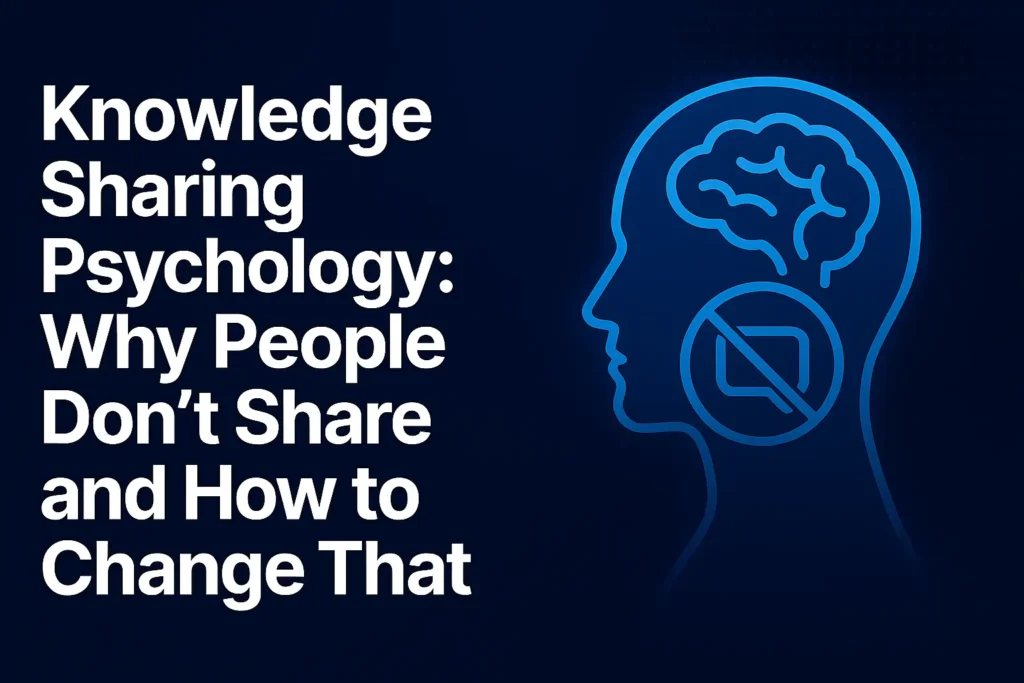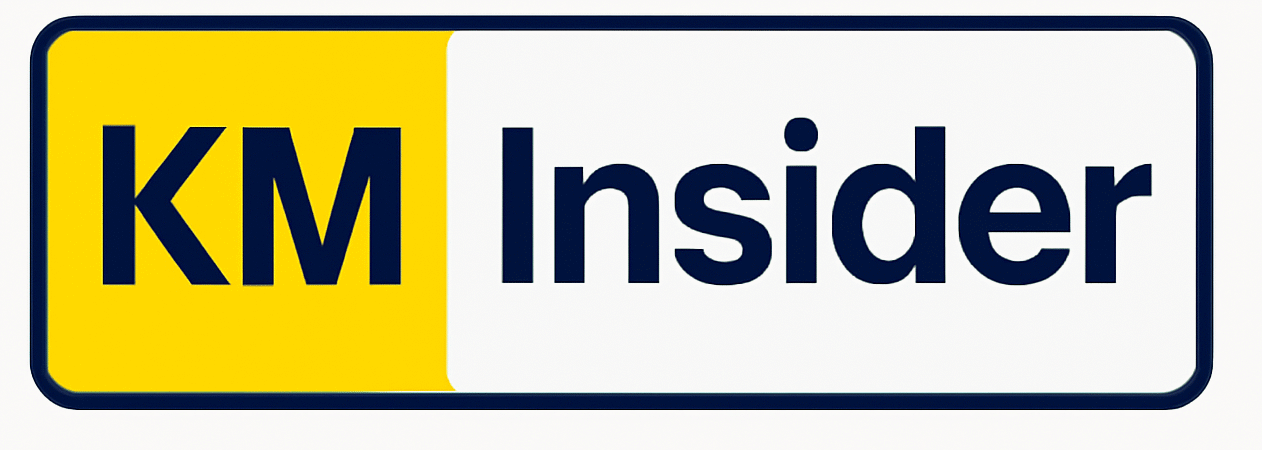Knowledge sharing isn’t just a technical problem—it’s a human one. Even with top-notch KM tools in place, many employees hesitate to contribute. They hold back ideas, skip documenting lessons, or avoid public forums. To build a knowledge-rich culture, KM leaders need to understand the psychology behind that hesitation—and what to do about it.
The issue isn’t just technical. It’s human.
Key Takeaways
- Knowledge sharing is often blocked by fear, insecurity, and a lack of trust—not lack of tools.
- Employees hesitate to share when they fear judgment, loss of influence, or being ignored.
- Psychological safety and visible leadership support are essential for open KM cultures.
- KM must be embedded in workflows and rewarded as a core behavior, not an afterthought.
- Cultural signals—like recognizing contributions—matter more than platforms or processes.
If you’re a KM leader wondering why people don’t contribute, or why your communities of practice stay silent, it’s time to explore the human side of knowledge. Because once you understand the psychology behind knowledge withholding, you can begin to change it.

1. Fear of Judgment: “What if I’m wrong?”
One of the biggest blockers to knowledge sharing is fear—fear of being wrong, outdated, or judged. Many professionals hesitate to contribute because they worry their input will be criticized or misinterpreted.
This is especially true in competitive cultures where mistakes are penalized or where expertise is closely tied to status.
How to fix it:
- Normalize imperfection. Use phrases like “working draft” or “initial notes” to lower the pressure for perfection.
- Leaders must model vulnerability. When managers admit what they don’t know or share incomplete thinking, others follow.
- Reward contributions, not correctness. Celebrate participation, not polish.
2. “My knowledge is my power”
In many organizations, people believe their knowledge gives them job security or influence. Sharing it feels like giving up an edge.
This mindset is common in siloed departments or roles with undefined knowledge boundaries.
How to fix it:
- Shift the narrative: Sharing knowledge equals influence, not loss.
- Recognize sharers in performance reviews, newsletters, or peer awards.
- Create leadership paths that reward knowledge impact—not just knowledge possession.
3. No Time, No Incentive
“I’m too busy” is a common refrain. And it’s often true—people don’t have time to document, tag, or reflect unless they see clear benefits.
If KM feels like extra work with no return, it will always be pushed aside.
How to fix it:
- Embed KM into workflows. Make it part of how people close projects, onboard new hires, or wrap meetings.
- Use lightweight tools like voice notes, quick prompts, or template-based forms.
- Link KM to team performance—show how shared insights reduce duplication or speed up decisions.
4. Lack of Psychological Safety
Psychological safety—the belief that you won’t be punished or humiliated for speaking up—is critical to knowledge sharing.
In low-trust environments, even the smartest employees stay silent. They worry their ideas will be stolen, mocked, or ignored.
How to fix it:
- Build peer-to-peer feedback norms. Train teams to respond constructively.
- Encourage story-based sharing instead of rigid templates. It humanizes the content.
- Let people share anonymously if needed, especially in early stages.
5. “No one listens anyway”
Another blocker? Apathy. Some employees feel like sharing won’t lead to change—or won’t be seen at all.
If KM platforms are black holes where contributions disappear, people stop contributing.
How to fix it:
- Acknowledge and elevate contributions. Mention them in meetings, updates, or decisions.
- Show impact. Use stories like: “Because Sarah shared that workaround, we saved 12 hours on X.”
- Surface the most-viewed, liked, or reused content publicly.
6. Overly Rigid or Technical KM Systems
If sharing knowledge means navigating a complex form or learning a new platform, people won’t bother. Friction kills sharing.
How to fix it:
- Use the tools people already love—Slack, Teams, email—then sync that content to your KM system.
- Offer low-barrier entry points: a quick post, a voice note, a screenshot with tags.
- Make the KM system more human. Use friendly language, visuals, and simple UX.
7. Cultural Signals That Undermine KM
If leaders say “knowledge sharing is important” but then reward only individual wins or penalize risk, people get the real message: keep your head down.
Culture trumps strategy. Every time.
How to fix it:
- Align rewards with collaboration. Celebrate team learning moments.
- Make knowledge sharing part of onboarding, performance management, and daily rituals.
- Let KM success stories lead town halls, not just tech updates.
Final Thought: Knowledge Sharing Is Behavior, Not Just Content
People don’t share because of a system. They share because they feel safe, valued, and connected to a bigger purpose.
The psychology of KM is about emotion, motivation, and trust. If you want your KM program to thrive, you must design for how people feel—not just how they work.
Because the biggest KM breakthroughs don’t happen in systems. They happen in minds.
Subscribe to receive notifications for free webinars on Knowledge Management.
